Triple left turns. Dual right turns.
Other than Phoenix, Arizona, I have rarely seen triple lefts.
This is a pretty complicated intersection, yet we felt completely comfortable using it. And there were plenty of other folks who we can describe as all ages, all abilities. It is near a hospital and a university.
How have the Dutch made it not only feel safe for all users, but actually be safe for all users – despite the fact that it is a 8×6 lane signalized intersection with two bus rapid transit lanes in the middle?
They created two-way bike paths, that are separated from the road by a small landscape strip. The two-way facilities are provided on each side of these busy streets – because, honestly it would be impossible to cross these wide streets at any location other than a signal – so getting to destinations requires the two-way system.
There are protected intersection treatments at each corner. There are bike traffic signals and ped traffic signals. The pedestrians get an early release, then the bikes, and then the cars. But it is just a second or so for each mode. Just enough to get folks moving into the intersection and into more visible positions. The trolleys move on their own signal, but there were some overlap phases to keep things moving.
And there are safety islands at several locations as you cross the street.
It is located at the corner of the University of Amsterdam, VU Campus, School of Medical Sciences.

Triple Lefts. Dual Rights. A trolley rail in the middle. Bus Rapid Traffic Lanes. But by adding traffic safety islands, and protected corners, along with two-way bike lanes, the Amsterdam traffic engineers have created an intersection that is safe, and comfortable for all users, no matter what mode they choose to travel with.
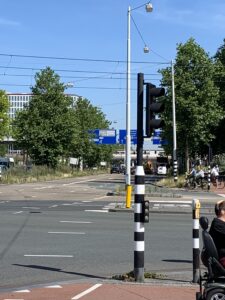
Traffic signal head and pole for bike riders coming into the intersection on the two-way path. Even a wheelchair user can be seen using this intersection near the university.
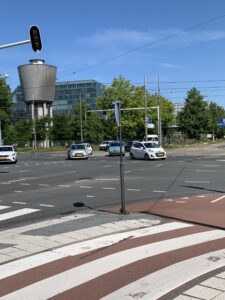
The island between the protected bike lane and the right turn lane.
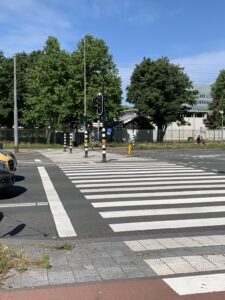
The crosswalk, each time there is a striped black and white pole that is a ped push button on an island.


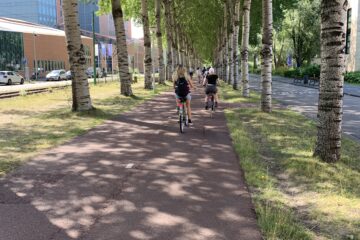
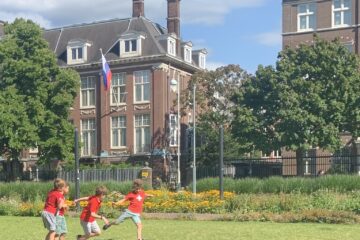
0 Comments